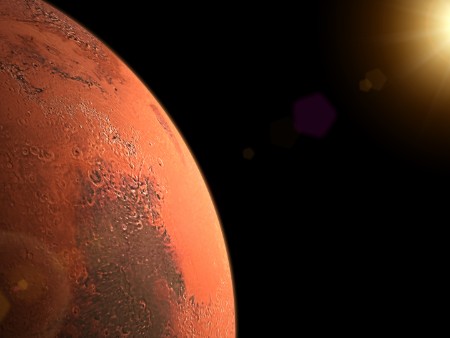Historical instances of extreme climate change on Mars could be detected through the measurement of subsurface temperatures, according to a new University of Stirling study.
Experts in Stirling’s Planetary Ices Laboratory, located within the Faculty of Natural Sciences, believe that the technology used by the heat flow probe on the latest NASA mission to Mars might be able to identify “major” climate change events of the past.
The team – led by Dr Nicholas Attree – say the findings of their research, which involved hypothetical modelling, could help to understand similar historical events on Earth, where historical climate changes are already being traced in borehole temperature measurements.
Dr Attree and Stirling colleague Dr Axel Hagermann are working on NASA’s InSight mission, which landed on the Red Planet last November. The scientists are simulating data obtained by the Heat Flow and Physical Properties Probe (HP3), an instrument provided by the German Institute of Planetary Research in Berlin. Dr Attree used numerical models to estimate the effect that historic freak climate changes might have on the heat flow measurements.
Dr Attree explained: “HP3 will be digging down into the subsurface of Mars and recording temperatures and heat flow from the interior. The magnitude of the heat flow tells us about the Martian deep interior and helps to create formation and evolution models. If historical climate change has led to more or less excess heat stored in the subsurface, it could influence HP3’s results.”
The team considered a specific situation where cycles in Mars’s orbit causes its atmosphere to collapse – or freeze – onto the poles. In these cases, the team found that thermal conductivity of the Martian soil decreases – and, in turn, excess heat could build up.
“We found that small changes caused by climate change are unlikely to be picked up by HP3,” Dr Attree continued. “However, it may be possible to detect very large changes – and this is important because we may be able to carry out similar measurements on other planets.”







